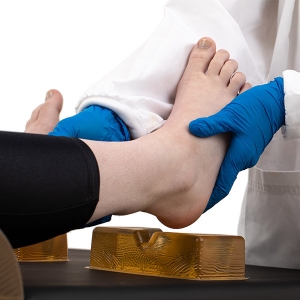
One of the highly common surgical positions is supine. This approach involves the surgical team’s watchful eyes to oversee a patient that will lie on their back with their arms either tucked or untucked to provide direct anatomical and surgical exposure to any area from the head and neck to the anterior aspects of the lower legs and feet. Supine position may be requested for a myriad of surgical procedures including everything from a thyroid, chest, cardiac, general, urology, orthopedic, or podiatry procedure to name a few. Given the wealth of clinical indications for the supine position, intentional time must be afforded for the perioperative team to consider all areas of required surgical access, as well as the areas not exposed during the surgical intervention.
The posterior aspects from the occipital region, scapula, brachial nerves, sacrum, gluteus, posterior thighs, gastrocnemius, and heels are all locations of potential pressure and nerve injury occurrence while in the supine position. Additional offloading and “free-floating” of the patient’s heels are suggested during supine positioning, and a well-padded and pressure redistributive surface under the patient’s legs to relieve strain and load on the lumbar spine and sacral-vertebral nerves. During supine positioning there is potential for position-induced hypotension that can lead to decreased tissue perfusion (Rothrock, 1993). This is of special consideration for patients that are pregnant. It is recommended that a patient who is pregnant and undergoing obstetric surgery be positioned in a lateral left tilt via the use of a wedged-shaped positioning device under the right lumbar region above the iliac crest to achieve a 12–15 degree lateral tilt (AORN, 2023). Failure to provide adequate padding and pressure redistributive surfaces during supine positioning for any patient can result in adverse patient events. Such events can include but not limited to paresthesia of muscle below the knees, numbness in the gastrocnemius or foot, foot drop or pain in the lateral aspects of the legs (Watson, 2011).
Failure to properly position patient arms at less than 90 degrees (when extended) or tucked with the palmar aspects of the patient hands resting upon and against a gel surface at the lateral aspects of the patient body can result in nerve damage to the ulnar nerve and or brachial plexus bundle. When using positioning devices such as a sled (toboggan arm guard), the device should also include a pressure redistributive surface to prevent nerve and soft tissue injury.
The supine position is the most common choice for many surgical interventions. Despite the routine use of the supine position, the potential for injury is always present and must be front of mind for the perioperative team. Using the correct devices to achieve the maximum surgical exposure is of paramount importance for safe patient outcomes.
Amos Schonrock, MAN, RN, ST, PHN, CSSM, CNAMB, CNOR, NE-BC, Perioperative Practice and Safety Specialist
References
Association of periOperative Registered Nurses. (2023). AORN.org. Retrieved March 9, 2023, from https://www.aorn.org/guidelines-resources/clinical-resources/clinical-faqs/positioning-the-patient
Rothrock, J. C. (1999). The RN First Assistant: An expanded perioperative nursing role. Lippincott.
Watson, D. (2011). Perioperative Safety. Mosby/Elsevier.
B9021-000

